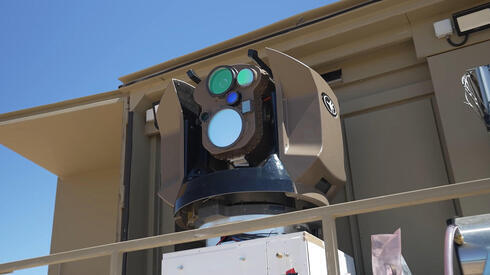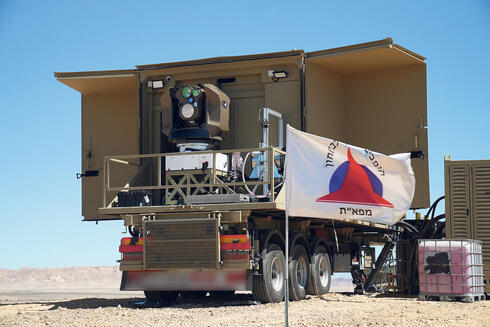
Laser weapons move to forefront of Israel’s air defense after Iran missile war
Rafael and Elbit to deliver first operational systems by year-end as defense officials call for urgent funding to replenish interceptors and expand capabilities.
The deadly Iranian missile strike on a residential building in Beersheba early yesterday morning marked a jarring final chord in Israel’s war with its greatest enemy. Over 12 days of conflict, Iran launched more than 530 ballistic missiles, most of them carrying warheads weighing approximately half a ton. Israel’s air defense network, led by Israel Aerospace Industries’ Arrow 2 and Arrow 3 systems, intercepted over 90% of them. Complementing this were intercepts by the David’s Sling system, whose capabilities were expanded to cover long-range threats, and the U.S.-supplied THAAD and SM-3 systems.
Still, the handful of missiles that breached these defenses caused extensive destruction, offering a glimpse of the catastrophe that was narrowly averted. Twenty-eight civilians were killed, and the cost of repairing the damage is expected to run into billions of shekels. Now, the defense establishment must confront a difficult question: was this price tolerable?
Sealing the gaps in Israel’s multi-layered defense system will require billions more, investments in new batteries, interceptor stockpiles, advanced research, and manpower. And even then, a hermetic solution may remain elusive. The enemy, too, will learn from this war. The next round could be more innovative, more prepared, and even deadlier.
Senior defense officials warn that these insights are not currently shared by the Ministry of Finance. With the war still fresh and tensions ongoing, budget officials are already scrutinizing defense spending and delaying approvals for urgent procurement orders. These orders are intended to restock and retool the defense industries for a full-scale renewal. But that process is being slowed, even in the midst of what many see as the longest and most difficult campaign in Israel’s history.
Early yesterday morning, when former U.S. President Donald Trump commented on the ceasefire, he seemed to drift into fantasy by suggesting that Iran and Israel would never battle again. Israel remains deeply appreciative of Trump’s role in crippling Iran’s capabilities, including the attack on nuclear facilities centered at the Fordow site. But appreciation aside, few in the defense establishment believe this war is truly over. On the contrary, most expect another round.
Resupplying interceptors, advanced munitions, drones, and maintaining the air fleet that carried out bombing sorties all come at a steep cost. Since October 7, Israel’s defense industries have effectively become an operational arm of the IDF, fully mobilized to meet urgent needs. Now, deeper integration between the IDF, the Defense Ministry, and Israeli defense firms is required to preserve, and expand, the technological edge that enabled Israel’s successes. And that means delivering more systems, at greater scale, for less money.
Related articles:
A key part of this transformation may involve moving beyond expensive “boutique” weapons. These specialized systems are effective, but prohibitively costly and difficult to produce in large quantities. What Israel needs now is a scalable equalizer. High-energy laser weapons might offer that.
By the end of the year, Rafael is expected to deliver its Iron Beam laser-based interception systems, capable of neutralizing rockets and UAVs within a 10-kilometer radius. Elbit Systems, meanwhile, is developing more advanced airborne laser systems for longer ranges and greater complexity. And Israel Aerospace Industries has accelerated development of the Arrow 4 missile, which will further expand Israel’s strategic defense envelope.
All of this will cost taxpayers - significantly. But it’s not spending that can wait. The smart weapons and interceptor missiles that will counter Iran’s next-generation systems must begin production long before they are needed in battle. If Finance Minister Bezalel Smotrich has developed a newfound sense of fiscal restraint amid the roar of cannons, he would do better to apply it to coalition funds, not to the defense budget.
